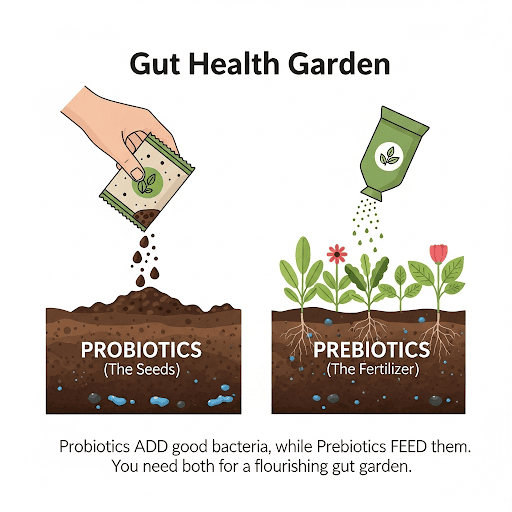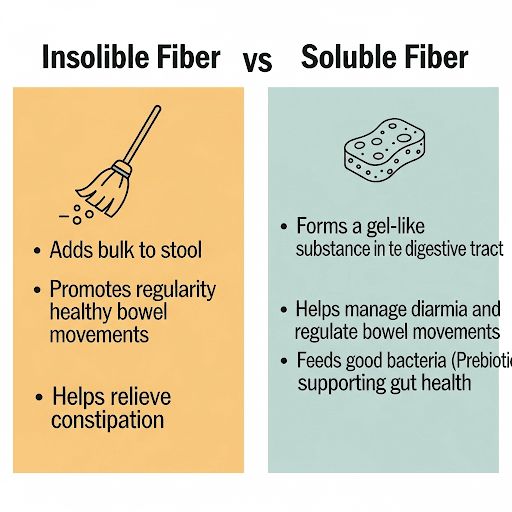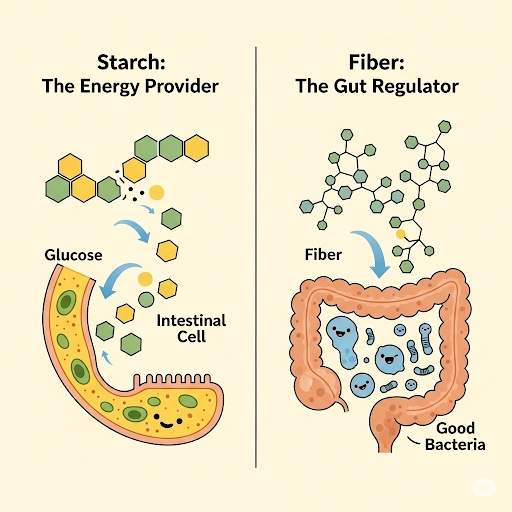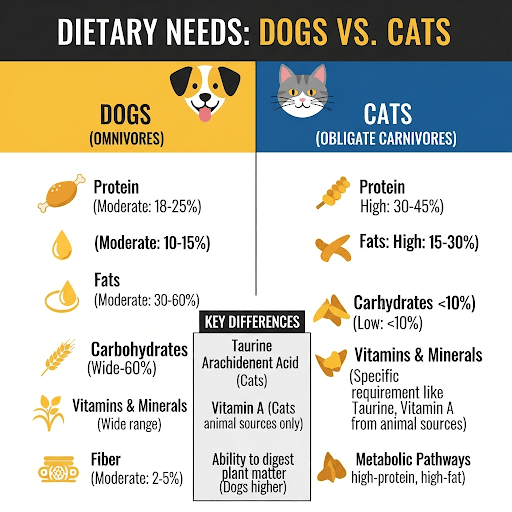Imagine your pet's gut is a vast, bustling garden—a complex ecosystem known as the microbiome. This garden is home to trillions of tiny citizens (bacteria), some of which are beneficial "good guy" plants, while others are troublesome "bad guy" weeds. The key to a healthy digestive system, a strong immune system, and even a happy mood is to ensure the good plants flourish and keep the weeds in check.
In the quest to cultivate this healthy gut garden, two words pop up constantly: prebiotics and probiotics. They sound alike, they are often sold together, and they both work to support gut health. But they are fundamentally different. This confusion can stop well-meaning owners from making the best choices for their pets.
This article will clear up the confusion once and for all. We'll explain the distinct roles of prebiotics vs. probiotics, show you why your pet needs both, and introduce the simple "garden analogy" to make it all stick.
Probiotics: The "Good Bacteria" Seeds
Let's start with the one you've most likely heard of. Probiotics are the good guys themselves.
Definition: Probiotics are live, beneficial microorganisms (like bacteria and yeasts) that, when given in adequate amounts, provide a health benefit to the host.
The Garden Analogy: Probiotics are the SEEDS. When you give your pet a probiotic supplement, you are directly planting new, healthy seeds (beneficial bacteria) into the garden of their gut.
These beneficial bacteria work to crowd out harmful pathogens, strengthen the intestinal wall, aid in the digestion of food, and produce certain vitamins. You can find them in specially formulated veterinary supplements or some high-end pet foods designed to support probiotics for cat gut health and canine digestion. For them to work, they must be live and able to survive the journey through the stomach.
Prebiotics: The "Fertilizer" for the Good Guys
So, if probiotics are the seeds, what are prebiotics? They are the specialized food that helps those seeds grow.
Definition: Prebiotics are a specific type of dietary fiber that is indigestible by your pet. Instead of being broken down by stomach acid, they travel to the colon to act as a food source for the beneficial bacteria that live there.
The Garden Analogy: Prebiotics are the FERTILIZER. They don't introduce any new seeds, but they provide the perfect nourishment for the good seeds you've planted and the good plants that are already there, helping them grow strong, multiply, and thrive.
When beneficial bacteria ferment prebiotic fiber, they produce powerful compounds called Short-Chain Fatty Acids (SCFAs), which nourish colon cells and create an environment where it's difficult for "weeds" to grow. This is the essence of what are prebiotics for dogs and cats—they selectively feed the good guys. You'll find them in ingredients like chicory root, beet pulp, and other plant fibers.
A healthy gut needs both the seeds and the fertilizer. Our meal planner app helps you find formulas that take a holistic approach, containing natural prebiotic fibers to nourish the existing microbiome. This helps you build a resilient gut ecosystem from the ground up, right from their food bowl.
Synbiotics: The Power of Working Together
Now that you know the difference, a third term makes perfect sense: synbiotics.
A synbiotic is simply a product that contains both probiotics (the seeds) and prebiotics (the fertilizer) in one package. The logic is simple and powerful: by providing the beneficial bacteria along with their own personal food supply, you give them the best possible chance to survive, colonize, and flourish in the competitive environment of the gut. This combination of synbiotics for pets can be particularly helpful after a course of antibiotics, during times of stress, or for pets with chronic digestive sensitivities.
As with any supplement, you should always talk to your veterinarian before adding a probiotic or synbiotic to your pet's routine to ensure it's the right choice for their specific needs.
(The source of prebiotics is fiber. Dive deeper into its function in our article [The Function of Fiber: More Than Just Roughage].)

Conclusion: Cultivating a Healthy Gut Garden
The prebiotics vs. probiotics for pets debate is easy to solve when you remember the garden.
- Probiotics = The beneficial seeds.
- Prebiotics = The nourishing fertilizer.
To cultivate a truly healthy gut garden for your pet, you need to do both: plant good seeds and provide the fertilizer that helps them outcompete the weeds. Start by choosing a high-quality pet food that contains natural prebiotic fibers. Then, if your pet needs extra support, talk to your veterinarian about adding a species-specific probiotic.
Stop the confusion and start supporting your pet's gut health with confidence. Ask your veterinarian if a prebiotic-rich diet or a synbiotic supplement is right for your pet. Use our meal planner to find foods designed to build a resilient and thriving digestive system from the inside out.


